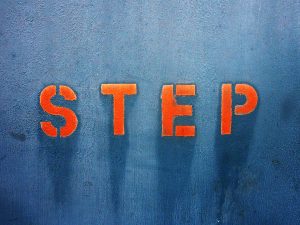Hummingbird

New camera – Olympus OM-D
Just bought a new camera, an Olympus OM-D. In 1974 I bought one of the first OM-1 cameras and loved it. It went around the world with me. Eventually I bought a Canon EOS 35mm, and then an Canon 1D digital. But my first love was always the OM-1. So now I have returned to the Olympus brand. Here are some comparison photos.
Continue reading “New camera – Olympus OM-D”Budgets
President Barack Obama says, “Exxon pocketed nearly $4.7 million every hour”
This was talking about 2011. Now I found this interesting, so I wondered, in comparison how much did the US spend per hour in 2011. So I googled and found this site: http://www.usgovernmentspending.com/. According to them, government spending in 2011 amounted to 6.1 trillion dollars. So dividing 6.1 trillion by 365 days per year, then by 24 hours per day gives the hourly spending rate during 2011 of approximately 696 million dollars per hour. Hmmm, perspective is an interesting thing. It seems to me that this country has more of a spending problem than a revenue problem. Now if you take the current US population according to the Census bureau (2011) as 311,591,917, then if everyone paid their fair share (fair being defined as equal in this case) then it is only (approximately) 2.23 dollars per hour (696 million dollars divided by 311 million people) or about 52 dollars a day every man, woman and child needs to pony up. That’s about 19.5 thousand per year.Learning French
I am attempting to learn French once again. It was many years ago that I took a first term college class. it is amazing how many more resources we have today thanks to the internet. I am using the following tools:
Rosettastone software – While the product comes with CD’s, once you are registered you can access the on-line courses.
Babbel.com – Wow. For the money this is hard to beat. Six months for $40. Similar methodology to Rosettastone. I especially like the vocabuary review.
http://www.bbc.co.uk/languages/french/
This site is not as good as babbel.com but it is free. It has learning games and some good lessons including “Basic French in 12 Weeks”
Google Translate. French to English and English to French
French verb conjugater test – very good. Both regular and irregular verbs.
French radio streamed from the internet. I listen to France Bleu Azur
JavaScript programing
Also at the bottom of the box
Photocopy of telegram from Ted Lesky to my Mom

Letters – 1942 to 1945 #48 (last one)
Capt. T.G. Leske 0-387336
Med. Det. 354th Inf
APO 89 C/O PM
N.Y. N.Y.
Postmark U.S. Army 89 Oct 11 1945
Miss Jane Axtell
538 S. Normandie
Los Angels, Calif
USA
10 Oct 45
Camp Lucky Strike
France
Hyah Jane:
This will be the last letter you will receive from me overseas. I expect to be homeward bound a the end of the month, Oh, Glory!
First of all, I did receive your gift package and I did let you know it arrived. Anyway, to settle matters – thanx so much and it really was appreciated.
Life is so dammed monotonous and nerve-wracking in this camp that we could all go wacky with no effort whatsoever. Fortunately, I was able to get two leaves to England and Scotland. It was a swell break in the routine and great fun.
As to pictures – I never sent one to you because I just never had any taken. We were always in field clothes until we came back here and there hasn’t been much change.
You won’t need a picture anyhow, as I think it will be much better deal if the real thing is on the spot. Of course, it may possible be "civies" so you may have to look for the carnation in my lapel so that you may recognize me.
My plans for the present call for a trip to the Coast to look for a place to practice. I really like it out there and would like very much to practice in L.A., S.F., or Seattle. Possible the picture may change when I get home but I am all hit up about it right now.
You can be a big help by letting me know what you think of the idea and giving some suggestions, will you?
When and if I get to L.A. you and I must hit the Cantina and say hello to the bartender. This is we will say hello if we can talk.
If you gained the ten pounds in the proper places you should really be something to see. I’ll see!
Nite, hon
Bestest
Ted
Send your letters to just plain Boonton, J.J. it really can’t miss me, don’t you know.
Letters – 1942 to 1945 #47
Capt. T.G. Leske 0-387336
Med. Det. 354th Inf
APO 89 C/O PM
N.Y. N.Y.
Postmark U.S. Army 89 Aug 16 1945
Miss Jane Axtell
538 S. Normandie
Los Angels, Calif
USA
15 Aug 45
Camp Lucky Strike
Bon Jour Cherie!
Above is just about the total of the French I have learned and I just had to show off.
Your letter arrived Saturday and was quite a supprise since it has been so very seldom that I have heard from you.
It was a shame about your Dad – I know how much fun you had with him.
Yes I received your package, for which you were properly thanked. To cinch the matter, my thanks again, dumpling.
There isn’t much chance of our getting home very soon as we are processing the troops who were to be redeployed. Now we probably have to get all the other troops out before we sail.
When the time does come for us to hit the States L.A. will definitely be one of my stops – I must see Freddie Fisher. And, oh yes, it seems that seeing you might have something to do with my coming to that fair city.
You ask of my brother – luck is with us and we are only about fifty miles apart. He is stationed just outside Le Hauve at Camp Herbert Tareyton [Note: the camps referenced are known as the "cigarette camps"] and we see each other fairly often. We even were able to hit Paris together.
Tomorrow I get my first leave and am going to England and Scotland. It is only a weeks leave but it should be worthwhile.
Thinking of you, I am reminded of your cousin, that he was big enough to look at curves. So am I! How about a new pin up? I’m drooling at the very thought of it.
Let me hear from you soon, won’t you?
Bestest
Ted
A fox is a wolf that brings flowers
My thanks to Lucy for putting out the message for me while you were gon. I wish I could have been there to read it.














